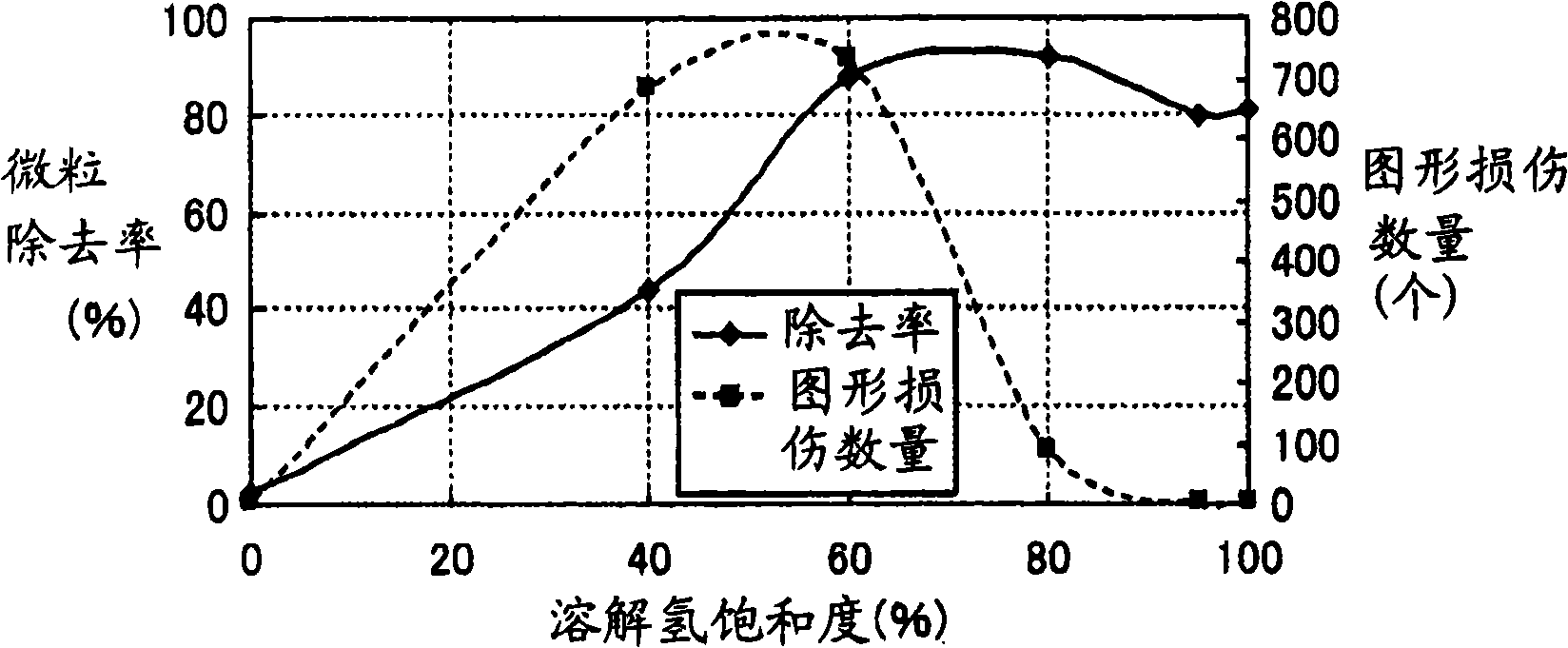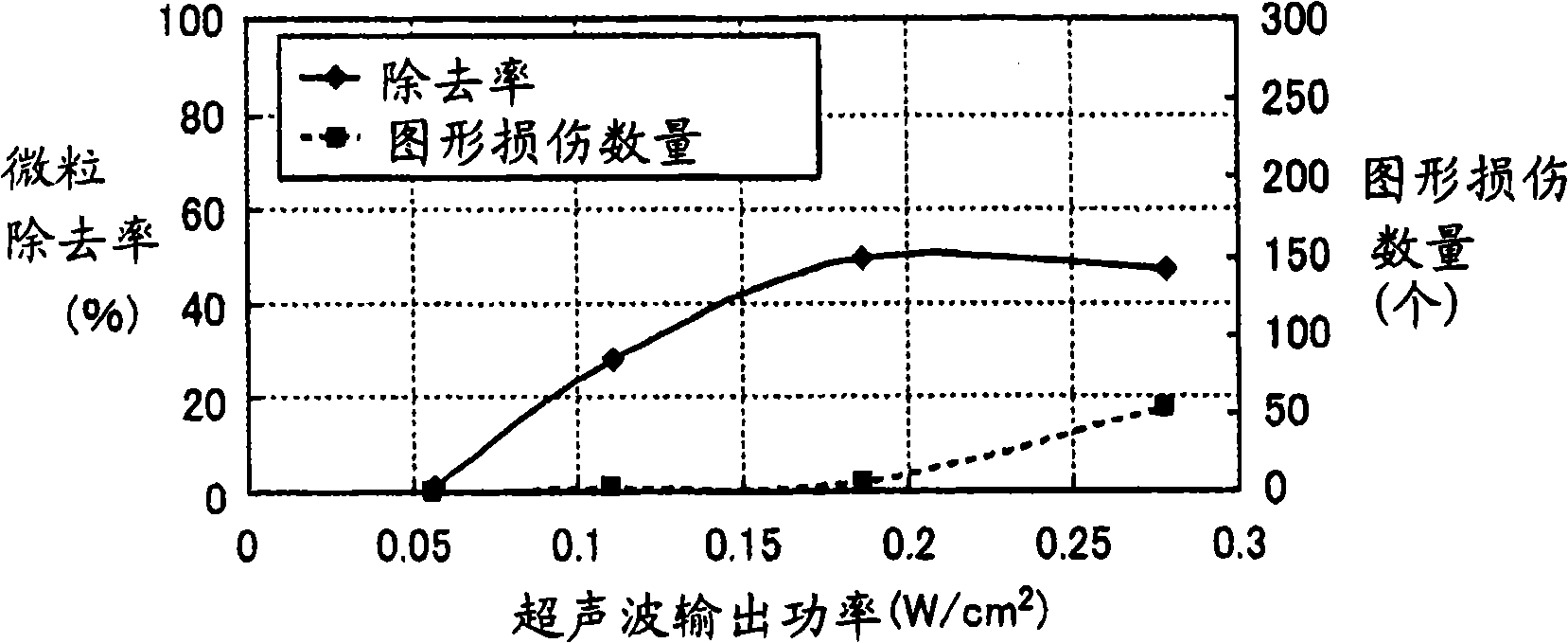Method of cleaning substrates and substrate cleaner
A technology for cleaning devices and substrates, which is applied to cleaning methods and tools, cleaning methods using liquids, chemical instruments and methods, etc., which can solve the problem of weakening the cleaning force, the inability to apply immersion cleaning to dual-fluid jetting, and the inability to obtain foreign matter removal effects, etc. problem, achieve high efficiency and prevent damage
- Summary
- Abstract
- Description
- Claims
- Application Information
AI Technical Summary
Problems solved by technology
Method used
Image
Examples
Embodiment 1
[0045] In this embodiment, in the cleaning method of the batch immersion treatment method, the effect of the saturation of the dissolved hydrogen on the cleaning efficiency (particle removal rate) and the damage of fine patterns (the number of pattern damages) was investigated. figure 1 It is a schematic diagram showing the preparation method of washing water. Such as figure 1 As shown, after the ultrapure water is supplied to the hydrogen water supply unit 1, it is heated by the warmer 2 as needed, and then the liquid is supplied to the cleaning tank 3 at a flow rate of 7 L / min. In the hydrogen water supply unit 1, KHOW-HS10S (manufactured by Kurita Industries) was used to prepare a cleaning solution with a predetermined dissolved hydrogen concentration. In such a hydrogen water supply unit 1, although hydrogen gas generated by the electrolysis of water is used, hydrogen may be supplied from the outside through a hydrogen high-pressure gas cylinder or the like. In addition, afte...
Embodiment 2
[0051] In this embodiment, the influence of the output power of the ultrasonic wave on the removal rate of particles and the number of pattern damage is investigated. In addition, the same steps as in Example 1 were performed except that the dissolved hydrogen saturation was 88%, the liquid temperature of the washing water was 23° C., and the output power of ultrasonic waves was changed. The results are shown in Table 2. In addition, the effect of ultrasonic output power on the removal rate of particles and the number of pattern damage is shown in image 3 in. Such as image 3 As shown, although the output power of the ultrasonic wave is increased to increase the removal rate of particles, the damage of the fine pattern is increased, so the output power of the ultrasonic wave is preferably 0.05W / cm 2 ~0.2W / cm 2 In the range.
[0052] Table 2
[0053]
Embodiment 3
[0055] In this embodiment, the influence of the liquid temperature of the cleaning water on the removal rate of particles and the number of pattern damages was investigated. In addition, the same steps as in Example 1 were performed except that the dissolved hydrogen saturation was 88% and the liquid temperature of the washing water was changed. The effect of the temperature of the cleaning water on the removal rate of particles and the number of pattern damage is shown in Figure 4 in. Such as Figure 4 It is shown that although raising the liquid temperature of the cleaning water does not greatly change the removal rate of particles, the damage to the fine patterns will be reduced.
[0056] Such as image 3 It is shown that although increasing the output power of ultrasonic waves will increase the removal rate of particles, the damage of fine patterns will also increase. But like Figure 4 As shown, if the temperature of the washing water is increased, the removal rate of partic...
PUM
 Login to View More
Login to View More Abstract
Description
Claims
Application Information
 Login to View More
Login to View More - R&D
- Intellectual Property
- Life Sciences
- Materials
- Tech Scout
- Unparalleled Data Quality
- Higher Quality Content
- 60% Fewer Hallucinations
Browse by: Latest US Patents, China's latest patents, Technical Efficacy Thesaurus, Application Domain, Technology Topic, Popular Technical Reports.
© 2025 PatSnap. All rights reserved.Legal|Privacy policy|Modern Slavery Act Transparency Statement|Sitemap|About US| Contact US: help@patsnap.com



